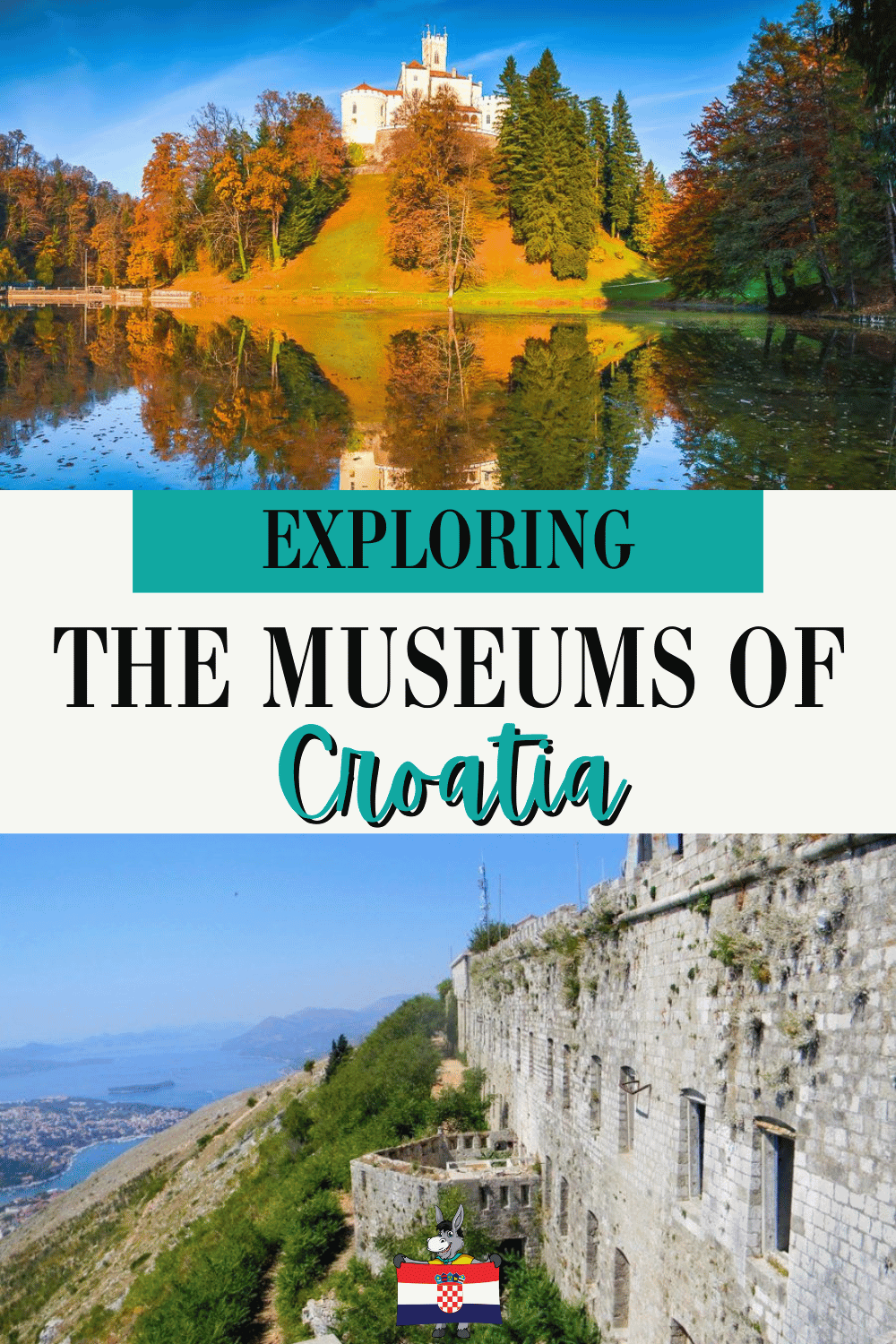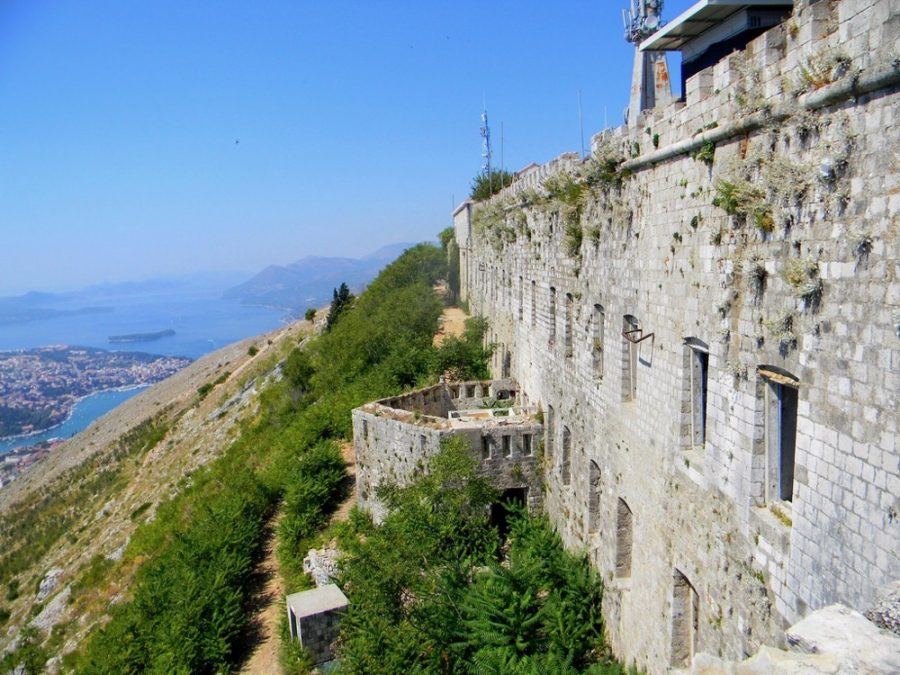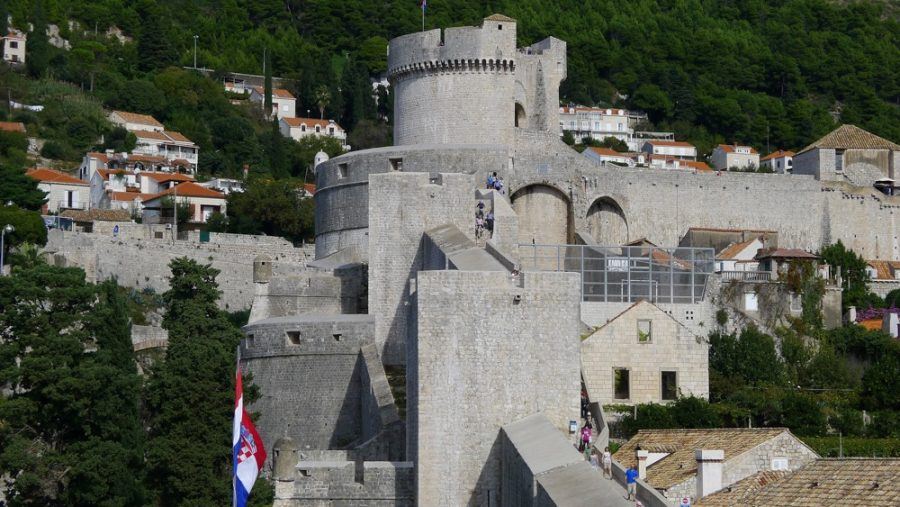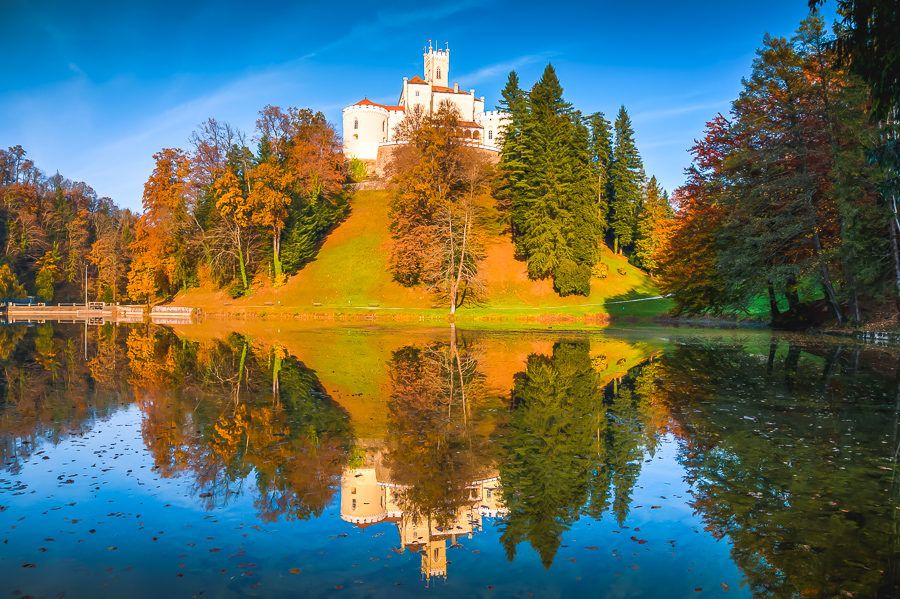Here is a list of the greatest museums in Croatia. Some of our faves and some suggested by friends. Enjoy.

There’s more to Croatia than a breathtaking coastline, tasty seafood, holiday-perfect islands, and photogenic coastal towns.
Although we know how damn amazing that all is!
The ancient regions within Croatia boast a wealth of culture and history that may surprise you. And what better places to get to know Croatia’s rich heritage than its museums?
Below, you’ll find an overview of the greatest museums in Croatia. They cover a wide variety of fields, from archaeology and architecture to science, history, and the lives of influential Croatians, as well as a couple of other pretty unusual topics.
If you want to really get to know the Croatian culture, these sixteen impressive museums are where you should go. Some may be quirky and surprising, others might be serious and official, but they’re all fantastic.
Here are 16 excellent museums in Croatia you should definitely visit:
Listen in no particular order (I mean, how would I rate a museum anyway?); here are some of our favorite museums – or museums in Croatia that colleagues and friends of mine have raved about over the years.
Skip Ahead To My Advice Here!
1. Varaždin City Museum, Varaždin

A small city in northern Croatia, Varaždin is home to one of the best-preserved old towns in inland Croatia.
The Old Town Castle, in particular, is a major attraction. This gorgeous building sits just north of the city’s historic center, separated by a moat and embankments. This is where you’ll find the Old Town’s Renaissance Palace, the residence of the city’s aristocracy between the 13th and the 19th centuries.
Nowadays, the whole building is the Varaždin City Museum, consisting of six different departments—the Cultural, Historical, Archaeological, Ethnographic, and Entomological Departments, and the Gallery of Old and Contemporary Masters.
The stunning setting and comprehensive exhibits of this museum make it truly one of Croatia’s best museums.
While all departments are fascinating and definitely recommended, you should dedicate some extra time to the Entomological Department. There, you can see the “World of Insects,” a vast collection of insects that was donated to the museum by a local teacher. Featuring insects from various habitats and biotopes, it’s considered to be among the finest of its kind in Europe.
2. Glass Museum, Zadar

The first museum you might be interested in is the Museum of Ancient Glass in Zadar. A relatively recent addition to this beautiful Dalmatian town, it is housed in the 19th-century Cosmacendi Palace.
A place worth visiting just because it focuses on glass, the museum exhibits one of the greatest collections of Ancient Roman glass outside of Italy.
Its displays include everything from amulets and jewelry to goblets, jars, vials, and vessels used by Roman women to store creams, oils, and perfume. The collections also include Christian glassware such as flasks and cups.
Plus, if you plan your trip well, you’ll get to see glass being blown on site (that you can also buy in the gift shop).
3. Museum Of Illusions, Zadar
Another exceptional museum in Zadar, the Museum of Illusions, is an incredibly fun place for a morning activity or for when it rains.
This museum will dazzle you, confuse you, fascinate you, trick you and educate you. Nothing in this museum is what it seems.
It’s a fantastic place where you’re sure to be overwhelmed by the limits of your senses. Major highlights include the Vortex Tunnel, the Mirror Room, and holograms.
The Museum of Illusions will remind you that we all perceive the world through our own senses and that our assumptions aren’t always correct.
The museum’s amazing tricks and displays will also teach you about how the human brain works, how our perception can be influenced, and how to determine whether something’s real or not.
Local Tip: If you love solving puzzles, Jadera’s Secrets, a new interactive experience in Zadar, is also worth your time! While not a museum, it will bring loads of intrigue and history to your time in Old Town.
Bonus: There is also one in Zagreb if you are not coming to visit us in Zadar.
4. Pejačević Castle, Virovitica

In the far northeastern corner of Croatia, far removed from the coastal crowds, you’ll find Pejačević Castle.
This elegant and massive castle lies in the unassuming town of Virovitica. Built in late-Baroque and Neoclassicist style and on the site of a former medieval fortress, it dates from the early-1800s.
The town of Virovitica purchased the building in 1930 and spent a couple of decades renovating and restoring it. Since 1950, it has housed the Town Museum, which features numerous exhibits, from culture and history to ethnography and archaeology.
Brands We Use And Trust
5. Museum Of Broken Relationships, Zagreb

Zagreb also has its fair share of unusual museums. The one with the most eye-catching name has to be the Museum of Broken Relationships.
Housed in the Baroque Kulmer Palace in Zagreb’s historic Upper Town, this is a must-visit attraction in the Croatian capital.
The museum’s exhibits are exactly what you might expect. Dedicated to unsuccessful love relationships and affairs, it displays things like love letters and personal objects from former lovers. It tells stories of heartbreak and exhibits possessions that symbolize love.
This has to be one of the most remarkable museums in Croatia, if not in Europe (there’s a sister museum bearing the same name in Los Angeles, too).
In fact, in 2011, the Museum of Broken Relationships received the award for the most innovative museum in Europe.
6. Typhlological Museum, Zagreb
This is yet another one of the many museums in Croatia dedicated to a topic that’s not often featured in museums.
Zagreb’s Typhlological Museum is a specialized museum that focuses on the problems faced by disabled people. Its name is derived from the Greek words “typhlos,” meaning blind, and “logos,” meaning speech, reason, or thought.
It specifically deals with the challenges of visually impaired persons. A governmental institution, the Typhlological Museum, helps people with disabilities experience all forms of social life. It does this through art exhibits that are designed to be felt and by organizing various events.
It does phenomenal work, allowing the local community to learn about what life with disabilities like while giving disabled people the chance to experience art and to actively participate in social activities.
7. Nikola Tesla Memorial Center, Smiljan

The birthplace of scientist Nikola Tesla, famously credited with inventing modern alternating current (A.C.) electricity.
Smiljan is the logical location of the Nikola Tesla Memorial Center. This center encompasses Tesla’s restored childhood home, which now houses a museum and the Serbian Orthodox St. Peter and Paul’s Church, and the surrounding area.
Several exhibits showcase inventions by Tesla while the museum tells you about the renowned scientist’s life.
It’s a fascinating place to visit, especially if you’re into engineering and physics, a perfect stopping point on the way between Zagreb and the Dalmatian coast.
8. Museum Of Croatian War Of Independence, Dubrovnik

Boasting what’s probably the best location of any museum in Dubrovnik, the Museum of Croatian War of Independence is housed in the Imperial Fort atop Mount Srđ.
Reachable with the iconic cable car, this mountain lies just behind the Old Town and offers spectacular vistas.
The museum itself is absolutely fascinating, a must-visit attraction for anyone who wants to understand Croatia’s history.
There are no fewer than 500 exhibits, spread out over four main areas and covering the period from 1991 to 1995. Exhibits include everything from battle maps, weapons, and mines to documents, documentary photographs, video footage, logbooks, and audio recordings.
9. Gornji Ugao Tower, Dubrovnik

Dubrovnik, a former independent republic and dominant force in the Mediterranean, has several major historic sites.
Its massive UNESCO-Listed City Walls are, of course, what comes to mind immediately. Other defensive structures that complemented these fortified walls surround the Old Town, many of them mighty fortresses.
One of them is the Minceta Fort, another one of the Gornji Ugao Tower, both of which were connected to the City Walls.
This tower, however, also served as a place of production. Specifically, it was a metallurgic foundry up until the 1600s. Archaeological research has unearthed almost the entire foundry, including water basins, a forge, a sand depository, and the mold-casting area. This is where various metal objects were made, from cannonballs and bullets to workmen’s tools and bells.
You can see many of these historic areas on a tour of the tower. It’s a real historical gem, this one.
10. Neanderthal Museum, Krapina

Krapina has a pretty serious claim to fame. One of Europe’s most significant archaeological sites where the world’s largest collection of Neanderthal people fossils was found.
No fewer than 900 human bones were discovered in a cave in Krapina in 1899, catapulting the small town to the highest reaches of the scientific world.
Those human bones belong to many dozens of people, male and female, and of ages between 2 to 40. Additional fossils found in the area include those of prehistoric animals like giant deer, wooly rhinoceros, cave bear, elk, wolf, and wild buffalo. More than a thousand stone tools offer a unique insight into how Neanderthal people used to live. This all makes Krapina one of Europe’s richest Paleolithic Neanderthal sites.
The Neanderthal Museum, truly one of the greatest paleontological and archaeological museums in this corner of Europe, is extremely recommended if you have an affinity for this kind of science and history. Walking trails connect the museum with the actual excavation site.
As a bonus, the Little Donkey LOVED this museum. Its interactive displays will keep kids engaged without question.
11. Vlaho Bukovac House, Cavtat

One of the greatest-ever Croatian artists, Vlaho Bukovac, was known for his eclectic and varied painting styles.
Living in various places during his life, he frequently changed his style according to the fashion of the time and place.
Bukovac was born in the small town of Cavtat, which lies just south of Dubrovnik, the child of an Italian father and Croatian mother. He spent the first eleven years of his life there, before going to America with his uncle.
After traveling around North and South America for a while, he began focusing on painting as a career.
The Vlaho Bukovac House is the home where Bukovac spent those initial eleven years. This typical turn-of-the-18th-century house is now a fine museum.
It’s fascinating to walk through the childhood home of such a Croatian icon while also being able to see much of his oeuvre, including works from all five of his most significant artistic phases. The museum/house features old furniture and numerous paintings by Bukovac.
12. Apoxyomenos Museum, Mali Lošinj

This new-ish museum opened in the spring of 2016. And wow.
It’s dedicated to the Ancient Greek statue of Apoxyomenos, a work of art that represents a Greek athlete and is more than 2,000 years old, after being accidentally discovered off the coast of the island of Lošinj discovered by Rene Wouters, a Belgian tourist in 1999.
The statue has been exhibited in Zagreb, London, Florence, Paris, and L.A. Now, it’s found its permanent home in the Apoxyomenos Museum on the island where it was discovered.
This museum educates visitors about the history and features of this beautiful statue. It provides historical and cultural context, its modern exhibition rooms triggering all your senses, from smell and sight to hearing and touch.
In addition to exploring such a tiny piece of history in depth, which is something that’s hard to find in most other art history museums, a visit to the Lošinj archipelago is also memorable simply because of the area’s sheer beauty.
13. Trakošćan Castle, Trakošćan

Dating back to the 1200s, Trakošćan Castle in northern Croatia is one of the country’s greatest fortresses. Its beautiful white walls and striking red roofs provide a stark contrast to the green forest in which it stands.
You can visit this incredible castle and its grounds, including the park with a lake, the surrounding forest,t and the building next to the castle.
Inside, exhibits spread out all across the castle showcase what life was like for Croatian nobility—the objects and furniture on display date from between the 15th and 19th centuries.
Plus, if you love castles, here are a few more we think you’d enjoy.
14. Archaeological Museum, Split

As an important and ancient city with a well-preserved historic heart, Split has always been about conservation, preservation, and restoration.
This is why this is where you’ll find the oldest museum in Croatia. Founded in 1820, the Archaeological Museum is arguably the best and most comprehensive history museum anywhere in Croatia.
Its vast collection contains 6,000 stone epitaphs from Salona, around 30,000 history and archaeology books, enormous numbers of coins from Antiquity and the Middle Ages, Roman glass and Greek Hellenistic ceramics, and classical sculptures and mosaics.
The museum focuses on the central Dalmatian region, specifically Split itself and nearby Salona, where most artifacts were found.
It covers everything from the Greek colonization of the Adriatic and Roman times to the spread of Christianity in the region and medieval times.
Move This Adventure To Your Inbox & Get An Instant Freebie

No spam. Unsubscribe at any time.
15. Ivan Meštrović Gallery, Split
While Bukovac (mentioned earlier) was one of the greatest Croatian artists, Ivan Meštrović is considered to be the greatest of all time.
A 20th-century sculptor and architect, Meštrović was born in the rural Slavonia region and grew up in the Dinaric Alps.
After finding his calling in creative art, he lived all over the place, from Vienna, Paris, Zagreb, and Rome to the United States. He became the first Croatian artist in America who exhibited his work in New York City’s Metropolitan Museum of Art.
The Ivan Meštrović Gallery in Split is a superb museum dedicated to this great artist. The building itself was designed by Meštrović himself to serve as a summer home, art studio, and exhibit space.
Nowadays, the museum honors everything related to his life and work, including sculptures, designs, drawings, and architecture, and furniture.
The permanent collection takes up two floors as well as an outside sculpture garden. Anyone who’s into art will love visiting this world-class museum. It’s one of Split’s main and many cultural highlights.
16. Nehaj Castle, Senj

Located in the town of Senj, on the central Croatian coast between Istria and Dalmatia, Nehaj Castle is a historic fortress that dates from the 16th century.
It’s one of the great castles in Croatia, constructed to protect Senj against Ottoman invasions, which had happened three times before. It was built by the Uskoks who lived in the area during the Ottoman Wars and fought guerilla-style wars against the Ottomans.
If you’re interested in the history of castles in Europe and the lifestyle associated with it—tournaments, knights, chivalry, and the like— this powerful castle is as close as you can get to that in Croatia.
Nehaj Castle is now a museum featuring exhibits of drawings, clothing, weapons, and models of all kinds of stuff related to the time when the fortress was used.
It’s time to let your curiosity influence your travel itinerary!


The Neanderthal Museum is Krapina is fantastic and the town is so pretty. Trakoscan is an amazingly well preserved snapshot of life in the past. Beautiful walk around the lake too ⭐️
YEahhhhh that one is cool. And our Little Donkey loved it. Great for kids <3
If i may add two more to this great list, Museum of Alka in Sinj and Museum of Vucedol culture in Vukovar
Ohhhhh two that are on my list. I have been to the Alka, but it was before the museum – thanks Bariša Pandža <3
After the beach ? Sorry does not compute
hehehhehe